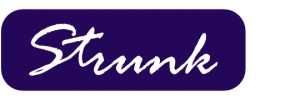Strunk at the ABA’s Conference for Community Bankers 2023
The American Bankers Association hosted this year’s Conference for Community Bankers in sunny Orlando, Florida from February 12-14 at the stunning JW Marriott Grande Lakes property. Attendees enjoyed a golf outing, Super Bowl tailgate party, Seussville reception and many engaging educational sessions.
This year’s keynote addressed employee retention, the “Great Resignation” and the “War for Talent”. Education sessions covered topics such as technology, payments, profitability, and lending.
Strunk was thrilled to debut their newest solution, Pricing Manager. Pricing Manager is a full-featured loan and deposit pricing solution that will provide banks with the ability to set loan and deposit pricing consistently and profitably. Commercial loans can be priced consistently by every lender – creating options for customers that all achieve the bank’s profitability targets. Additionally, rate sheets for consumer loans, residential mortgage loans, and deposits can easily be created that are also based on established profit objectives. Not only will Pricing Manager drive consistent achievement of profitability targets – it will also help you win more quality deals!
Strunk’s goal is to continually provide value-added SaaS solutions that help community banks increase profitability, while controlling operating expense. In addition to their latest offering, Strunk highlighted their overdraft service and best-in-class governance, risk and compliance solution, Risk Manager.
For more information on Pricing Manager or Strunk’s other solutions, visit https://strunkaccess.com/ or contact Strunk at info@strunkaccess.com.


